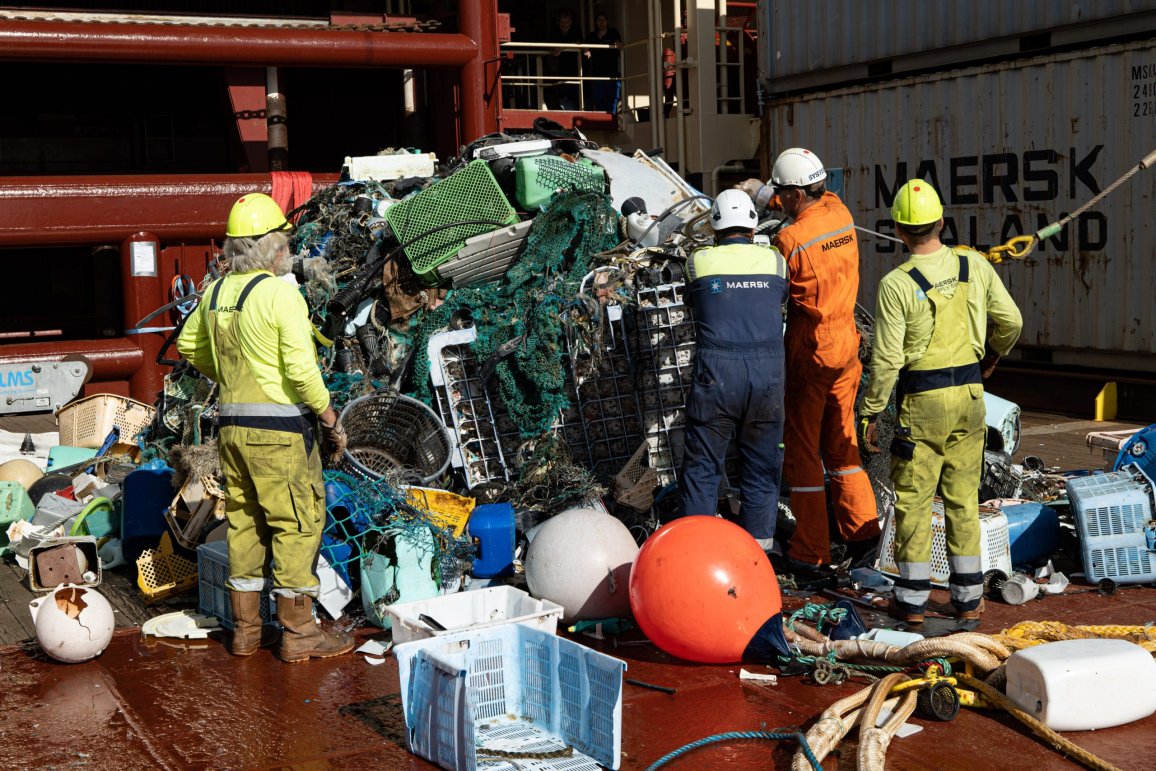How does waste end up in the oceans?
Plastics have many advantages and yet they often have a bad reputation. This is due among other things to the many images of waste in nature and in the oceans. But what does plastic waste look like, where does it come from and what can be done about it? A story of rivers, fishing boats and ghost nets.

© The Ocean Cleanup
There is a great deal of waste in our oceans. 75 per cent of it is plastic waste. But what has so far attracted less public attention is the fact that a big part of the waste is commercial fishing gear which has been lost. This makes the issue more complicated.
Professional fishing – the main source of waste
The fishing industry appreciates the positive attributes of plastics. This is hardly surprising considering that their easy handling, longer durability and high reliability surpass all natural materials. Every day, around four and a half million fishing boats go fishing in the oceans. A lot of things are lost in the process: according to WWF estimates, a large part of the plastic waste in the oceans consists of lost ropes, buoys, baskets, buckets, fishing lines and nets. More than a million tonnes are added every year. Proof has been provided by analysis of the world’s largest garbage patch, the Great Pacific Garbage Patch (GPGP) located between Hawaii and California. 70 per cent of this is fishing equipment, just under half of which is what are known as ghost nets, weighing around 79,000 tonnes in total. Recent studies such as analysis conducted by the environmental initiative The Ocean Cleanup even show that up to 86 per cent of the plastic waste in the GPGP comes from deep-sea fishing.
How does this happen? Equipment goes overboard in the course of fishing, storms and accidents. Gillnets and trawls break off and drift around the oceans as ‘ghost nets’. They get caught on the seabed, rocks, reefs and wrecks. Recovering them is difficult as the nets first have to be tracked down and laboriously removed by hand. Searches are now carried out using sonar, and nets are to be equipped with GPS trackers in the future. The robust material mix also requires intensive recycling. The good news is that many countries, research institutions, environmental organisations and fisheries have now recognised the importance of the issue and are taking countermeasures.
Rivers – transport routes for waste
The second reason for increased plastic waste in the oceans is also well known – according to studies, the global introduction of waste from the land to the oceans can be attributed to the ten largest rivers in Asia and Africa. These flush around twelve million tonnes of plastic waste into the oceans every year. The main culprit is the Yangtze River, followed by the Indus, the Yellow River, the Nile, the Ganges, the Niger and the Mekong. Pollution is the flip side of rapid economic growth.
But here, too, things are changing – investments in developing orderly waste disposal and in recycling waste as an energy source should stop pollution. As global waste transfer is mainly concentrated on ten major rivers, local measures can be taken too – the organisation The Ocean Cleanup has developed a new collection system for use in rivers. The Ocean Cleanup’s Interceptor is a solar-powered, 24-metre-long boat with a sieving device and container. It is designed to filter up to 50 tonnes of waste out of flowing waters a day – before it enters the ocean. This is a commitment that could set a precedent.
Fishing equipment in the oceans
More than two per cent of all fishing gear is lost every year. The world’s oceans already contain 25 million fish traps, 14 billion bait hooks, 2,963 square kilometres of gillnets, 75,049 square kilometres of purse seine nets (almost the size of Austria), 218 square kilometres of trawls (around 30,000 football pitches), 739,538 kilometres of longlines and main lines (equivalent to 17 times around the world) and 11.5 million twin lines.
Countermeasures:
- International Convention for the Prevention of Pollution from Ships (MARPOL): ban on the discharge of pollutants into the oceans.
- EU Fisheries Control Regulation: ban on the disposal of fishing gear at sea and a duty to report lost nets.
- Organisations and projects such as MARELITT Baltic, Aegean Rebreath, GhostNets Australia, Ghost Diving and Healthy Seas: used for the recovery, disposal and recycling of ghost nets.
Do you like our texts? Perhaps even so much that you want to use them in your own media? Then please get in touch with us beforehand!
